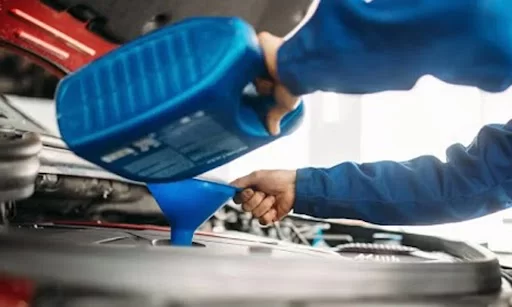
5 Essential Things to Check When Changing Your Oil
Proper car maintenance is crucial for the longevity and performance of your vehicle. Oil change is not just about protecting your engine; it also provides an opportunity to inspect other components under the hood. Regular inspections help identify potential issues and ensure that everything is in working order. In this article, we will provide a comprehensive checklist of five essential things to look for every time you change your oil.
1. Fluids: Ensuring Proper Lubrication
While oil is a vital fluid for your car, there are other essential liquids that keep your vehicle running smoothly. It is important to regularly check the levels and condition of these fluids:
- Radiator Coolant: This fluid helps regulate the engine’s temperature. Check the coolant level and inspect for any leaks or discoloration.
- Transmission Fluid: The transmission fluid ensures smooth shifting and proper transmission function. Refer to your vehicle’s manual to determine the correct procedure for checking the transmission fluid level.
- Power Steering Fluid: Power steering fluid enables easy maneuverability. Inspect the power steering fluid level and look out for any signs of leaks or contamination.
- Brake Fluid: Brake fluid is vital for the proper functioning of your braking system. Check the brake fluid level and look for any discoloration or signs of moisture.
- Windshield Washer Fluid: Don’t forget to inspect the windshield washer fluid level to ensure clear visibility while driving.
2. Belts & Hoses: Preventing Unexpected Breakdowns
Belts and hoses play a crucial role in the proper functioning of your vehicle. Regular inspections are essential to identify potential issues:
- Serpentine Belt: Check for signs of wear, cracking, or fraying. Replace the belt if necessary.
- V-Belt: Inspect the V-belt for any visible damage or excessive slack. If you notice any issues, it’s time to replace it.
- Timing Belt: Some vehicles have a timing belt that requires replacement at specific intervals. Consult your vehicle’s manual for guidelines on when to replace the timing belt.
- Hoses: Inspect all hoses for cracks, leaks, bulges, or soft spots. Replace any hoses that show signs of wear.
3. Headlights/Taillights: Ensuring Safety on the Road
Properly functioning headlights and taillights are essential for your safety on the road. Regularly check and maintain these lights:
- Headlights: Inspect for any dimness or flickering. If a light is nearing the end of its lifespan, consider replacing it before it completely fails.
- Taillights: Ensure all taillights are working properly. Check the turn signals and brake lights to ensure they are functioning correctly.
- Turn Signals: If the turn signal is behaving unusually, such as blinking rapidly or becoming solid, it may be due to a blown fuse or a faulty bulb.
4. Tires: Safety and Performance
Your tires are the only point of contact between your vehicle and the road, making their maintenance crucial:
- Tire Pressure: Regularly monitor your tire pressure and ensure they are properly inflated according to the manufacturer’s recommendations. Adjust the pressure as needed.
- Tread Wear: Inspect your tire treads for signs of uneven wear. If you notice any abnormalities, it may indicate alignment issues that need to be addressed.
- Foreign Objects: Check for any foreign objects, such as nails or stones, that may have punctured your tires. Remove them carefully to avoid further damage.
- Tread Depth: Use the penny test to check your tire tread depth. Insert a penny upside down into the tread groove, and if you can see all of Lincoln’s head, it’s time to replace your tires.
5. Professional Tune-Up: Expert Inspection
While DIY maintenance is commendable, some inspections require the expertise of a professional mechanic:
- Regular Tune-Ups: Consider establishing a relationship with a trusted mechanic who can perform regular tune-ups. These inspections can help identify any underlying issues before they escalate.
- Additional Maintenance: A professional can handle more complex maintenance tasks such as fuel system cleaning, spark plug replacement, and engine diagnostics.
Conclusion:
Changing your oil is an opportune time to inspect other vital components of your vehicle. It’s also a good time to inspect for any rust and if required get the rust proofing. By following this comprehensive checklist, you can ensure that your car receives proper maintenance beyond just an oil change Brampton. Regularly checking fluids, inspecting belts and hoses, verifying the functionality of lights, monitoring tire condition, and seeking professional tune-ups will help keep your car running smoothly and safely. Prioritizing your vehicle’s maintenance will extend its longevity and provide a worry-free driving experience.
Remember, always refer to your vehicle’s manual for specific maintenance guidelines and safety precautions when working on or operating your vehicle.

